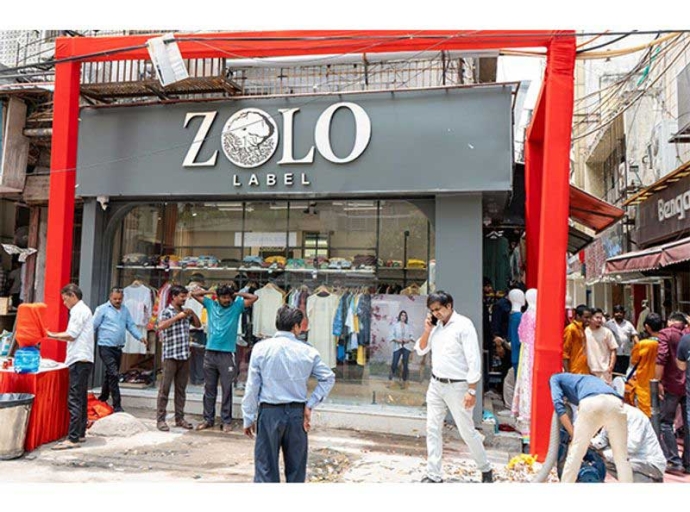The Kirana Comeback: Local stores powering India's next e-commerce wave

27 May, Mumbai 2025
India’s e-commerce space, particularly the quick commerce (q-commerce) segment, is seeing a lot of changes. While the dominant narrative has long been shaped by heavily funded big players establishing networks of strategically located ‘dark stores’ for rapid deliveries, a new cohort of startups is emerging to challenge this capital-intensive model. Their secret weapon: the government-backed Open Network for Digital Commerce (ONDC).
Their strategy is simple: leverage the ubiquitous network of local kirana stores. This paradigm shift holds significant implications for the fashion and retail sectors, potentially reshaping how consumers in both urban and rural India access goods.
The rise of the asset-light approach
For years, the playbook for q-commerce success involved significant upfront investment in dark stores – large, strategically located warehouses acting as fulfillment centers.
This model, though enabling swift deliveries, demands substantial capital for real estate, infrastructure, and operational costs. For example, Zomato's retreat from 225 smaller cities in early 2023 due to profit concerns underscores the challenges of the traditional dark store model in price-sensitive markets.
However, companies like Bengaluru-based KiranaPro and Apna Mart, and Mumbai's Kiko Live, are charting a different course. They are partnering existing neighborhood retailers, integrating them into their delivery networks through the ONDC platform.
ONDC acts as a unifying digital infrastructure, allowing buyers and sellers across various online platforms to seamlessly connect and transact. This interoperability is proving to be a game-changer for these startups, enabling them to tap into the vast inventory and existing infrastructure of local stores without the burden of establishing their own expensive dark store networks.
Deepak Ravindran, founder of KiranaPro, a company primarily focused on non-metros, says the dark store model is not a sustainable quick commerce model. He highlights the sheer scale of the existing kirana network, stating, There are around 3 lakh kiranas on the ONDC network but what they lacked was someone who brings traffic.
Implications for fashion & retail
The emergence of this asset-light model, powered by ONDC, presents both opportunities and challenges for the fashion and retail sectors within the e-commerce and q-commerce space.
The positive side of new model
Wider reach in Tier-II and III cities: These startups are specifically targeting smaller towns and cities, markets that have proven difficult for traditional q-commerce players relying on dark stores. This opens up new avenues for fashion and retail brands to reach a broader customer base beyond the major metropolitan areas.
Cost-effective expansion: For fashion and retail businesses, partnering these ONDC-enabled platforms could offer a more cost-effective way to expand their online presence and offer faster delivery options in these regions without the need for significant investment in their own warehousing and logistics infrastructure.
Leveraging local trust: Kirana stores often enjoy a high degree of trust and familiarity within their local communities. By partnering them, fashion and retail brands can potentially tap into this existing trust, fostering greater customer confidence and adoption.
Hyperlocal inventory access: For retailers with a physical presence, ONDC can facilitate the listing of their in-store inventory, enabling quicker delivery to local customers without the need to transfer stock to a centralized dark store. This can be particularly beneficial for fashion items where immediate availability and even try-before-you-buy options (potentially facilitated through local delivery) can enhance the customer experience.
Assortment limitations and more…
However, Apurva Dixit, associate VP, Blume Ventures, points out a crucial challenge, ‘Assortment’. Which means one has to ensure everything they are looking for, or a substitute, is present in the shop that they are going to.
Unlike the controlled environment of a dark store with a curated inventory, relying on local kirana stores might lead to inconsistencies and limitations in the range and availability of fashion and retail products. A customer searching for a specific size or color of an apparel item might not find it readily available at a nearby store.
Inventory management and reliability is another issue. As Ashish Kumar, Co-founder, Fundamentum highlights the issue of unreliable real-time inventory when sourcing from unorganized players. This can lead to order cancellations and poor customer satisfaction, particularly critical in the fast-paced world of q-commerce where speed and accuracy are paramount.
Dixit also notes that the economics of this model might be reliant on "more mass premium and premium products" to drive up AOV. This could pose a challenge for platforms focusing on value-driven fashion and retail, as they might face pressure to increase prices or accept smaller margins.
Moreover, ensuring consistent product quality and standardized packaging across a network of disparate local stores can be a significant operational hurdle for fashion and retail brands.
Maintaining brand consistency and meeting customer expectations for quality could be more challenging compared to fulfilling orders from a centralized dark store. And while leveraging local trust is an advantage, ensuring a consistent and seamless customer experience across different kirana stores might be difficult. Factors like the store's understanding of online order fulfillment, packaging quality, and adherence to delivery timelines can vary significantly.
The path forward
Indeed, the asset-light model powered by ONDC presents a compelling alternative to the traditional dark store approach, particularly for expanding q-commerce reach into smaller cities and towns. However, for the fashion and retail sectors to fully capitalize on this opportunity, the focus needs to be on addressing the emerging challenges. This can be done through:
Technology-driven inventory aggregation: Platforms need to invest in sophisticated technology solutions that provide real-time visibility into the inventory of participating local stores, ensuring accurate product availability information for customers.
Standardized training and processes: Implementing standardized training programs for local store owners on online order fulfillment, packaging guidelines, and customer service protocols will be crucial for ensuring a consistent customer experience.
Partnerships with local retailers: Platforms could focus on partnering larger, more organized local retailers or aggregators to ensure a wider and more reliable assortment of fashion and retail products.
Hybrid models: A potential future could see a hybrid approach where q-commerce players utilize a limited number of smaller, strategically located micro-warehouses in conjunction with a broader network of local stores to cater to different product categories and delivery timelines.
Latest Publications

































